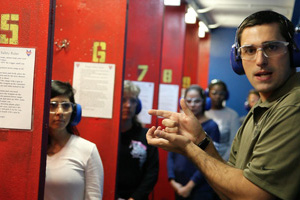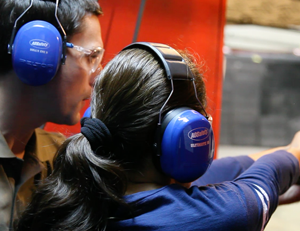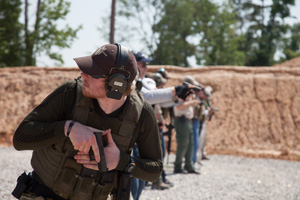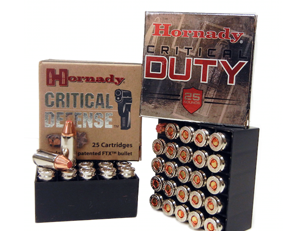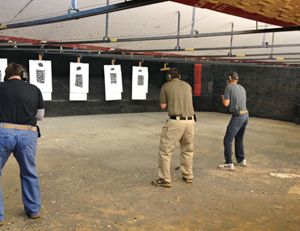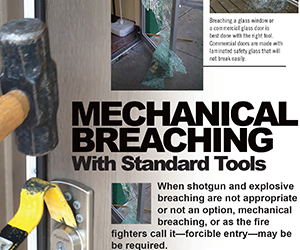
18
MECHANICAL BREACHING WITH STANDARD TOOLS
When shotgun and explosive breaching are not appropriate or not an option, mechanical breaching, or as the fire fighters call it—forcible entry—may be required.
360 Tactical Training instructor, Kent O’Donnell who wrote previously about shotgun breaching, talks to us about using the right tools to get in or out of a locked structure during an emergency. In his article “Mechanical Breaching with Standard Tools” he explains that fire fighters actually breach more doors than police officers. Not only do they breach doors at fires, but its is common for them to force doors for medical rescues as well. Generally, a fire fighter will be using tools that are simply home tools.
Mechanical breaching is similar to shotgun breaching in that you are working to move the throw of the dead bolt or lock from the door jamb. Mechanical breaching has some tactical drawbacks like increased time and apparent.
Breaching glass requires the correct tool, O’Donnell recommends using the Halligan tool and says the upside of breaching glass is that you can rip out large sections of the glass to clear out. He also reminds us of the importance to wear effective eye protection and gloves when breaking glass. You can use the same tool to hook into window coverings and “rake” them down for an unobstructed view.
Inward opening doors can be breached with a sledge hammer. If you do not see hinges, the door opens away from you, if you see hinges it opens towards you. To breach a door with a sledge hammer grip just behind the head with one hand near the end of the handle with the other. Swing the hammer with the rotation of your waist and upper body striking the locking mechanism wit the top of them hammer head. This may take a few strikes, but much safer than trying to kick the door.
When speed is not critical, he suggests using a door spreader, the goal is to spread the door jamb wide enough so the throw can pass and no damage the door or door frame. This is used effectively many times when conducting welfare checks on people who have not been seen for several days. A DIY version would be using a scissor jack or hydraulic jack, and some 2×4 wood which will spread the jamb with minimal damage.
While the words “breacher up” may remind us of SWAT or military operations the Kent explains that the threat behind the door can be anything from a child locked in a car to an elderly person who has fallen and that the average patrol officer will breach more doors in a year than a SWAT breacher. He had created the Patrol Active Shooter Kit using tools patrol level security and law enforcement personal can use to breach the most common doors. Worn like a quiver, it has loops for five 12 guage shotgun rounds on the front. The back carries a 10 lb. sledge, bolt cutters and 16 in. Halligan bar.

18
MECHANICAL BREACHING WITH STANDARD TOOLS
When shotgun and explosive breaching are not appropriate or not an option, mechanical breaching, or as the fire fighters call it—forcible entry—may be required.
360 Tactical Training instructor, Kent O’Donnell who wrote previously about shotgun breaching, talks to us about using the right tools to get in or out of a locked structure during an emergency. In his article “Mechanical Breaching with Standard Tools” he explains that fire fighters actually breach more doors than police officers. Not only do they breach doors at fires, but its is common for them to force doors for medical rescues as well. Generally, a fire fighter will be using tools that are simply home tools.
Mechanical breaching is similar to shotgun breaching in that you are working to move the throw of the dead bolt or lock from the door jamb. Mechanical breaching has some tactical drawbacks like increased time and apparent.
Breaching glass requires the correct tool, O’Donnell recommends using the Halligan tool and says the upside of breaching glass is that you can rip out large sections of the glass to clear out. He also reminds us of the importance to wear effective eye protection and gloves when breaking glass. You can use the same tool to hook into window coverings and “rake” them down for an unobstructed view.
Inward opening doors can be breached with a sledge hammer. If you do not see hinges, the door opens away from you, if you see hinges it opens towards you. To breach a door with a sledge hammer grip just behind the head with one hand near the end of the handle with the other. Swing the hammer with the rotation of your waist and upper body striking the locking mechanism wit the top of them hammer head. This may take a few strikes, but much safer than trying to kick the door.
When speed is not critical, he suggests using a door spreader, the goal is to spread the door jamb wide enough so the throw can pass and no damage the door or door frame. This is used effectively many times when conducting welfare checks on people who have not been seen for several days. A DIY version would be using a scissor jack or hydraulic jack, and some 2×4 wood which will spread the jamb with minimal damage.
While the words “breacher up” may remind us of SWAT or military operations the Kent explains that the threat behind the door can be anything from a child locked in a car to an elderly person who has fallen and that the average patrol officer will breach more doors in a year than a SWAT breacher. He had created the Patrol Active Shooter Kit using tools patrol level security and law enforcement personal can use to breach the most common doors. Worn like a quiver, it has loops for five 12 guage shotgun rounds on the front. The back carries a 10 lb. sledge, bolt cutters and 16 in. Halligan bar.

